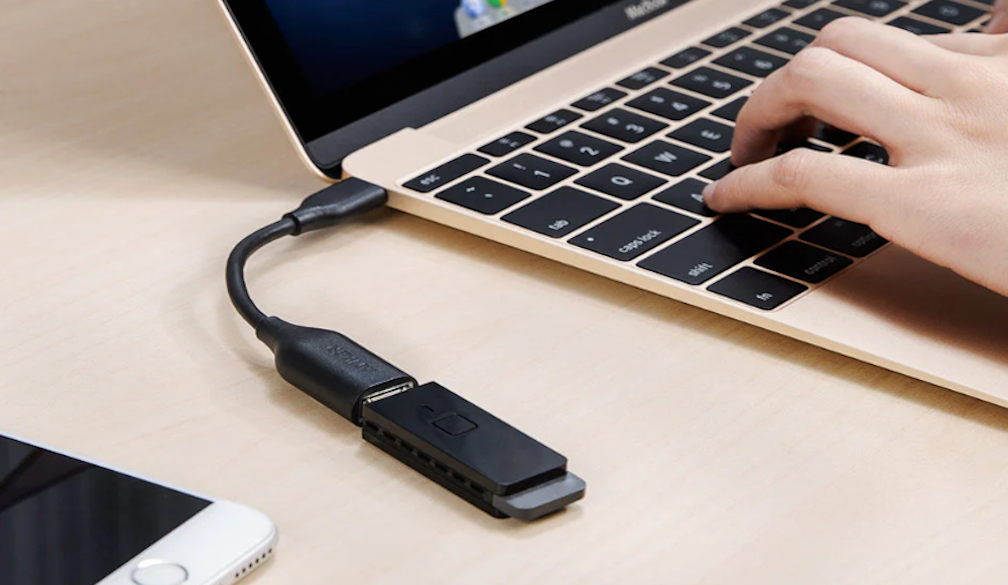The Essential Role of a USB-C to USB Adapter in a Modern Tech Setup

The way we connect and charge our devices has drastically evolved in the past decade. USB-C, with its speed and versatility, is now the go-to port for many devices from smartphones and tablets to laptops and docking stations. Yet, millions of gadgets still use the classic USB-A connection. This shift in standards has created a simple, powerful solution: the USB-C to USB adapter.
Whether you're working from home, managing tech in an office, or traveling, a USB-C to USB adapter can bridge the gap between legacy devices and the latest hardware. Let’s explore why it has become an essential accessory for anyone navigating the fast-changing tech landscape.
The USB Evolution: From Type-A to Type-C
Before we dive into the value of adapters, it helps to understand the USB evolution. USB-A ports have been around since the 1990s, powering flash drives, printers, keyboards, and charging cables. However, USB-C now dominates newer devices due to its:
- Reversible design
- Faster data transfer (up to 10 Gbps or more)
- Higher power delivery (up to 100W)
- Compact size suited for thin devices
The transition is clear, but we aren’t living in a fully USB-C world yet. That’s where the usb c to USB adapter shines.
Why You Need a USB-C to USB Adapter
Having a USB-C only device is great for future-proofing, but it can create challenges when connecting older peripherals. An adapter solves these problems instantly. Here are a few reasons to keep one in your tech kit:
1. Compatibility Across Generations
Whether it’s your favorite USB-A keyboard, an older flash drive, or a charging cable, the adapter allows you to plug it into modern USB-C ports without hassle.
2. Plug-and-Play Convenience
Most USB-C to USB adapters don’t require any drivers. They work immediately when connected, saving time and technical frustration.
3. Travel-Friendly Utility
Instead of packing multiple cables, a single USB-C to USB adapter allows you to charge, sync, and connect a wide variety of devices using what you already have.
4. Cost-Effective Upgrade Path
Instead of replacing perfectly working USB-A accessories, a compact adapter gives them new life. It’s an economical way to stay up-to-date without unnecessary purchases.
Key Features to Look For
When choosing the right adapter, focus on quality and functionality. Here’s what to consider:
a. Durability
Look for solid construction, reinforced joints, and aluminum or braided casing to prevent wear and tear.
b. Speed Support
Choose adapters that support USB 3.0 or higher for fast data transfers (up to 5 Gbps+). This is especially important when backing up files or connecting external drives.
c. Power Delivery (PD)
Some adapters support pass-through charging, which means you can power your device while using it. Make sure it supports enough wattage if you're connecting it to power-hungry gadgets like tablets or laptops.
d. Compact Size
Slim and lightweight designs make it easier to carry around, whether in your laptop sleeve or backpack.
e. Brand Reliability
Stick with trusted brands. Low-quality adapters can damage your devices or fail over time. Anker, for instance, is known for producing safe, reliable, and long-lasting tech accessories.
You can explore Anker’s full collection of USB-C to USB adapters designed with precision and performance in mind.
Real-World Scenarios Where It Matters
Still unsure if you need one? Here are common situations where a USB-C to USB adapter becomes your unsung hero:
Transferring Data from an Older Device
Imagine needing to move files from a USB-A flash drive to your USB-C-only MacBook. Without an adapter, you're stuck. With one, it’s plug-and-play.
Connecting to Office Peripherals
Many office environments still use USB-A for printers, scanners, and conference room tools. An adapter ensures seamless meetings and file handling.
On-the-Go Productivity
Digital nomads and business travelers often encounter tech with different port types. One adapter gives them the freedom to connect almost anything.
Reducing E-Waste
Using adapters means fewer electronic accessories get tossed out. It extends the life of your existing tech and supports a more sustainable approach.
Tech Compatibility Tips
Make sure your adapter supports the device you plan to use. USB-C to USB adapters generally work with:
- USB flash drives
- External hard drives
- USB hubs
- Wired keyboards and mice
- Charging cables for phones or tablets
- USB card readers
- DSLR cameras and microphones
For laptops, tablets, and smartphones with USB-C ports, this tiny tool becomes one of the most versatile accessories in your drawer.
Why Choose Anker?
With so many generic adapters available, choosing a brand with proven safety and quality is key. Anker offers an excellent selection of adapters built to last. Their USB-C to USB adapter collection emphasizes:
- Enhanced durability
- High-speed transfers
- Sleek, modern design
- Strong compatibility across platforms (Windows, macOS, Android)
Plus, Anker’s commitment to customer satisfaction and technical support ensures peace of mind.
Final Thoughts
A USB-C to USB adapter might seem like a minor tool, but its utility is enormous in today’s hybrid tech world. As we transition toward USB-C as the new standard, having a reliable adapter bridges the gap between the old and new seamlessly.
It’s a must-have for professionals, students, creators, and anyone who owns more than one device. Small, affordable, and infinitely useful—don’t leave home without it.
Check out Anker’s trusted line of USB-C to USB adapters to stay connected, no matter what device you're using.









